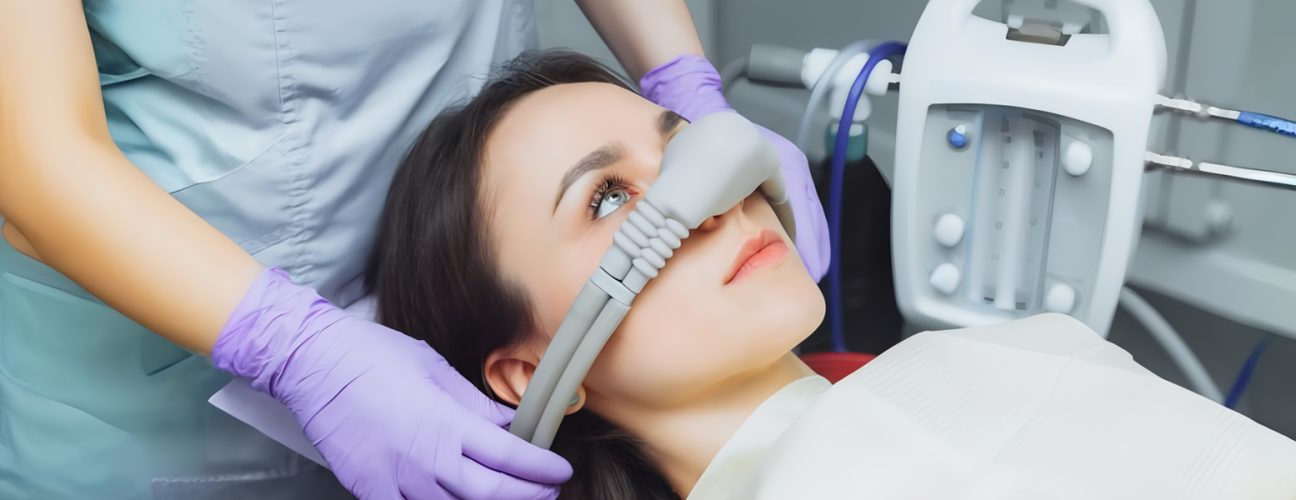What to Expect During Sedation Dentistry
October 1, 2025For many people, going to the dentist can feel like a nerve-wracking experience. Whether it’s fear of pain, a sensitive gag reflex, or a past traumatic dental visit, anxiety at the dentist is more common than you think. That’s where sedation dentistry steps in—it’s designed to help you relax, feel more comfortable, and get through dental treatments with less stress.
1. Understanding the Different Types of Sedation
Dentists near you don’t use a one-size-fits-all approach to sedation. Different types serve different needs depending on the patient and the complexity of the procedure. The goal is to make you feel calm without adding extra worry about the process itself.
- Nitrous Oxide (Laughing Gas): The lightest form of sedation. You inhale it via a small mask placed over your nose. It takes effect quickly and comes down just as fast, so you can usually return to your day without much downtime.
- Oral Sedation: Taken in pill form, this method relaxes you without putting you to sleep. It’s a popular choice for moderate anxiety.
- IV Sedation: Delivered directly into your bloodstream, this option provides a much deeper level of relaxation and allows for more control over the sedation level during your procedure.
- General Anesthesia: Used for more intensive procedures or extreme anxiety, it puts you into a deep sleep. You’ll need a longer recovery time and professional supervision throughout.
If you’re visiting a dentist Energy Corridor patients trust, we’ll guide you to the right option based on your comfort level and health history.
2. The Pre-Procedure Process: How to Prepare
Preparation helps the dental team keep you safe and ensures the sedation works effectively. It’s not just about showing up—it’s about getting your body and mind ready so the process feels smooth and manageable.
- Review Your Medical History: Your dentist will ask about any chronic illnesses, allergies, or medications you’re taking. This information helps them avoid complications and choose the safest sedation method for you.
- Follow Fasting Instructions: Some sedation methods require you to refrain from eating or drinking for a few hours before your appointment. These rules vary, so always double-check.
- Adjust Medications if Needed: In some cases, you may need to stop or reschedule medications before the appointment. Your dentist will work with your doctor if necessary.
- Plan for a Ride Home: If you’re not having nitrous oxide, you’ll need someone to drive you. Arrange transportation before the big day so you’re not scrambling last minute.
By taking these steps seriously, you give yourself the best shot at a stress-free dental experience.
3. What Happens During the Procedure
Once you’re in the chair and the sedation begins, most of the nerves you had melt away. The procedure becomes manageable—even forgettable. Your care team stays focused on both your treatment and your well-being.
- Vital Signs Monitoring: Throughout the procedure, your heart rate, oxygen levels, and blood pressure are constantly tracked to keep you safe.
- Sedation Administration: Depending on what you’ve chosen, you’ll either breathe in gas, swallow a pill, or have an IV placed in your arm.
- Feeling During Treatment: Most patients describe feeling dreamy or floaty. You might hear and feel things, but it won’t bother you. Some people doze off lightly and don’t remember much.
- Communication: For lighter sedation levels, you can still respond with hand gestures or simple words if needed. Your trusted dental team will check in with you regularly.
It’s reassuring to know you’re not just sedated—you’re actively monitored and supported the entire time.
4. Safety and Side Effects: What You Should Know
Sedation dentistry has a strong safety record, especially when performed by skilled professionals. That said, it’s always good to know what to expect and when to speak up if something feels off.
- Mild Side Effects: These may include dizziness, dry mouth, grogginess, or slight nausea. They typically fade after a few hours.
- Rare Risks: These are very uncommon but can include allergic reactions or issues with breathing—especially with deeper forms of sedation.
- Safety Measures: Modern dental offices are equipped with monitoring devices and emergency protocols. Dentists also receive specific training in sedation procedures.
- Who Should Avoid It: Not everyone is a candidate. If you’re pregnant, have certain heart or lung conditions, or are allergic to sedation drugs, your dentist might suggest alternative approaches.
When done correctly, sedation dentistry in Houston, TX, is not only effective but incredibly safe for most people.
5. Aftercare and Recovery Tips
Your dental appointment might be over, but recovery is still part of the experience. Aftercare plays a big part in how quickly you bounce back and how good you feel afterward.
- Recovery Time: Laughing gas wears off almost immediately, while oral and IV sedation can leave you drowsy for a few hours. Plan to rest once you’re home.
- What to Do After:
- Drink plenty of water
- Eat soft foods
- Avoid driving, operating machinery, or making big decisions
- Take any prescribed medications as directed
- What to Avoid: Stay away from alcohol, caffeine, and strenuous activity until you’re fully recovered.
- Call Your Dentist If: You have a fever, trouble breathing, intense nausea, or symptoms that feel unusual. It’s always better to double-check than to wait it out.
Most people feel back to normal by the next morning, especially if they follow recovery advice closely.
Final Thoughts
Sedation dentistry offers a safe, calming solution for patients having dental anxiety or those undergoing complex treatments. With the right preparation and care, your visit can be smooth and stress-free. Don’t let fear hold you back from a healthy smile. Contact A+ Family Dental today to learn more and see if sedation dentistry is right for you.
